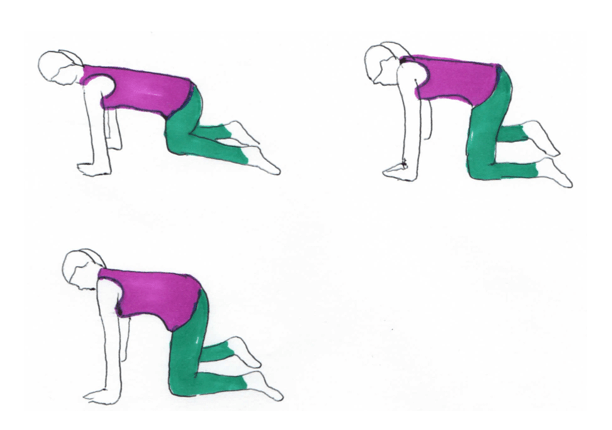The shoulders form a important part of good posture, being pain free and effective movement and exercise execution. If the shoulders are in a bad place and can’t move freely, then other muscles have to take over. For instance think about holding something relatively heavy. Are the tops of the shoulders up by the ears and forwards? In theory they should be drawing down the back, with the muscles in the arms doing most of the work, along with the abdominals and back muscles being used to stabilise the truck. When the shoulders are allowed to roll forwards and up, the muscles of the upper back and neck tend to get over worked, leading to tension in the shoulders, neck and head. The muscles in the chest then become shortened and tense, over time contributing to poor posture.
When thinking about exercise, poor posture can lead to improper exercise execution which can lead to muscle imbalances and even injury. If the shoulders are rounded forwards this has a tendency for the spine to round, meaning there could be inflexibility in the spine. If the spine cannot be placed in as neutral position as possible, this can lead to extra stress being placed on it, again leading to pain and injury when there is excessive load.
So what can you do? First of all forget squeeze the shoulders back and down! This in itself can cause tension and improper placement of the shoulders. Secondly don’t ‘force’ the shoulder blades into place. Imagine the shoulder blades are heavy and weighted down the back. The back of your neck should be long- imagine the ears reaching to the ceiling and the spine is tall. Now try and move the arms without the shoulders moving!
Secondly in box place the hands under the shoulders and draw the abs in. Now collapse into the shoulders so the shoulder blades draw together, now lift out of the shoulders. Imagine the chest is reaching towards with ceiling without allowing the spine to sag. Finally try and lift the knees a centimetre off the floor without allowing the shoulders to collapse or spine to curl.
Finally, take some time to do some stretching – both the chest but also working on the mobility of the middle (thoracic) spine. When the spine can move effectively then too can the rest of the joints.


